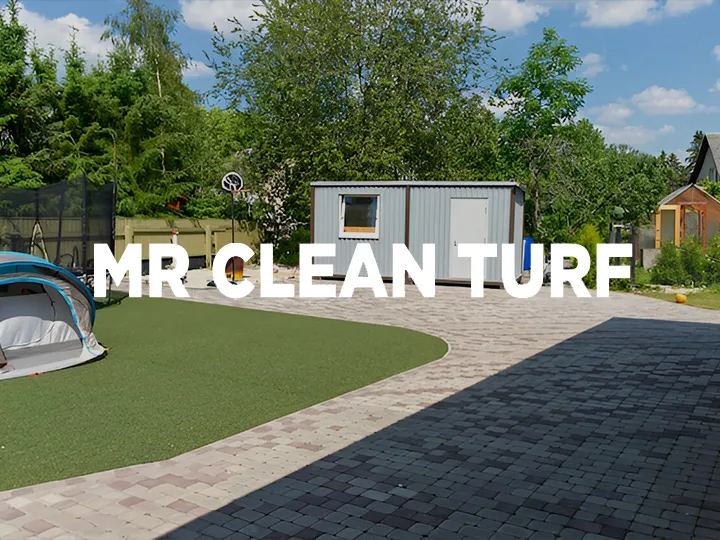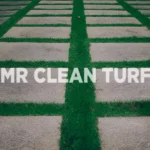Cobblestone Pavers | A Classic Look for Any Home
Three centuries have established cobblestone pavers as collectors of timeless beauty. Traditional patios, driveways, and walkways commonly use natural stones as their rugged material. They integrate perfectly with houses, irrespective of whether they are modern or traditional. The appearance of any property benefits from cobblestone pavers because they display distinctive designs along with unique textures, unlike bland asphalt and concrete surfaces.
They resist damage from high traffic volumes because these pavers are produced from basalt, granite, or limestone. The pavers interlock to boost durability, and the spaces in between them achieve drainage like permeable pavers while keeping a rustic appearance. The homeowners value that cobblestone transforms into an elegant patina while aging because it retains its durability through time.
This blog explores why cobblestone presents itself as an appealing choice while comparing its advantages against the other widely used varieties, which include budget-friendly concrete and eco-friendly rubber options.
History and Timeless Appeal of Cobblestone
Both Europe and modern times have preserved extensive cobblestone roads after establishing them as durable pathway materials many years ago. Smoothed river sediments made up the rough, uneven surfaces, which gave them an authentic appearance. While coping with contemporary times, the regular format of new cobblestones maintains their traditional appearance without complexities during installation. Your garden will gain historical appeal and maintain its durable appearance through the cobblestone choice, which suits both rustic landscapes and urban patios alike.
Comparing Cobblestone with Other Types of Pavers
The selection of property pavers requires taking into account how cobblestone measures up against alternative options. The different types of pavers exhibit various properties that match them to suitable application needs.
This blog analyzes cobblestone followed by bluestone and brick before permeable rubber and concrete pavers so readers can decide wisely. Missouri cobblestone pavers differ in key elements from alternative pavers, as shown in the following tables:
Type of Paver |
Key Features |
Pros |
Cons |
Cobblestone Comparison |
| Brick Pavers | It is made from clay that has been fired; the red-toned look is uniform. | A warm, sturdy, and durable design traditional for colonial homes. | It is possible to chip in with time. lower texture variance. | Cobblestone provides an extra texture and natural variety that adds character to spaces outside. |
| Permeable Pavers | The design is crafted with gaps to allow for absorption of rainwater; green. | Reduces flooding, supports drainage, and is eco-conscious. | Most often, it is made of recycled concrete or even gravel, with less appeal. | Cobblestone is a great choice for installation using permeable methods, but it gives the appearance of a classic. |
| Bluestone Pavers | The quarried sandstone has a smooth surface in cool blue-gray tones. | Elegant and elegant, it is great for outdoor spaces and formal settings. | It lacks strength; it is not suitable to be used in rustic design. | Cobblestone gives a rustic, natural look with a rustic charm. It is perfect for a rustic or eclectic design. |
| Rubber Pavers | The material is lightweight and shock-absorbing; it’s often utilized in playgrounds. | Safe and flexible for leisure places, and easy to put in. | It fades in the sun; it is less durable than natural stone. | Cobblestone is heavier and more durable and lasts longer, with low maintenance. |
| Concrete Pavers | It is a replica of stone and is budget-friendly. It is available in various colors and shapes. | Affordable, versatile, and customizable. | The cracks can be severe in conditions; they are less durable. | Cobblestone costs more, but it lasts longer than concrete. It develops a beautiful patina with time. |
Design Ideas for Cobblestone Pavers
Cobblestone displays unmatched flexibility through its creative design capabilities. Herringbone structures work best for driveways, while circular patterns suit fire pits effectively. Apply an attractive visual effect through the combination of brick pavers with cobblestone materials. The water feature can work ideally with bluestone pavers for adjacent placement. You can achieve a green home design by incorporating cobblestone pavers and permeable stones in your garden path areas.
Durability and Weather Resistance
When used in outdoor applications, cobblestone pavers demonstrate better resistance to extreme weather conditions than most materials used for such purposes. Changes between freezing temperatures and thawing will not damage cobblestone, and exposure to strong sunlight will not cause discoloration. Severe weather conditions strengthen cobblestone pavers because they withstand degradation, while rubber pavers warp and concrete pavers stain.
Low-Maintenance Benefits
Cobblestone needs minimal maintenance. Regular removal of debris should be followed by water hose washing procedures. When staining proves difficult to remove, you should use a soft soap solution. No harsh chemicals are required. The solid structure of cobblestone requires only occasional sealing since it differs from permeable pavers and paving stones, which need regular gravel refills.
Eco-Friendly Advantages
Natural cobblestone provides this sustainable material as an eco-friendly choice. The recycled material serves the production process more efficiently than concrete pavers while consuming lower power supplies. The installation of cobblestone with spacing between the stones functions as permeable pavers that reduce runoff and concurrently promote healthy soil conditions.
Cost and Long-Term Value
The cost of cobblestone pavers is initially higher than the rubber pavers and concrete pavers. However, their lifespan of more than 100 years makes them an excellent choice for investment. They can also increase the value of your property by generating a greater ROI than asphalt or simple concrete.
Installation Tips for Homeowners
The replacement of walkway areas meets the basic requirements that homeowners can handle the installation tasks. Start from the bottom using 6 inches of soil that you will follow with sand and gravel before placing the final stones. Professional assistance becomes necessary for executing complex designs that include curved driveways. Verify all local building requirements, especially when utilizing permeable pavers that need drainage systems.
Conclusion
Homeowners seeking exceptional beauty coupled with durability find their best solution in cobblestone pavers. Natural stone lovers and fans of modern design styles can find a permanent solution in these stones. The toughness of stone, together with its capacity to survive a tough climate and substantial walking activity, makes it the perfect material for driveways, walkways, and patios.
The beautiful natural aesthetics of these stones improve your home’s outward appearance, which then leads to boosting its market value. These pavers demand little upkeep while offering environmental advantages, thus becoming an excellent fashionable solution for people who own homes.
Are you ready to make your outdoor area? Call Mr. Clean Turf now to discuss cobblestone pavers for your house!



